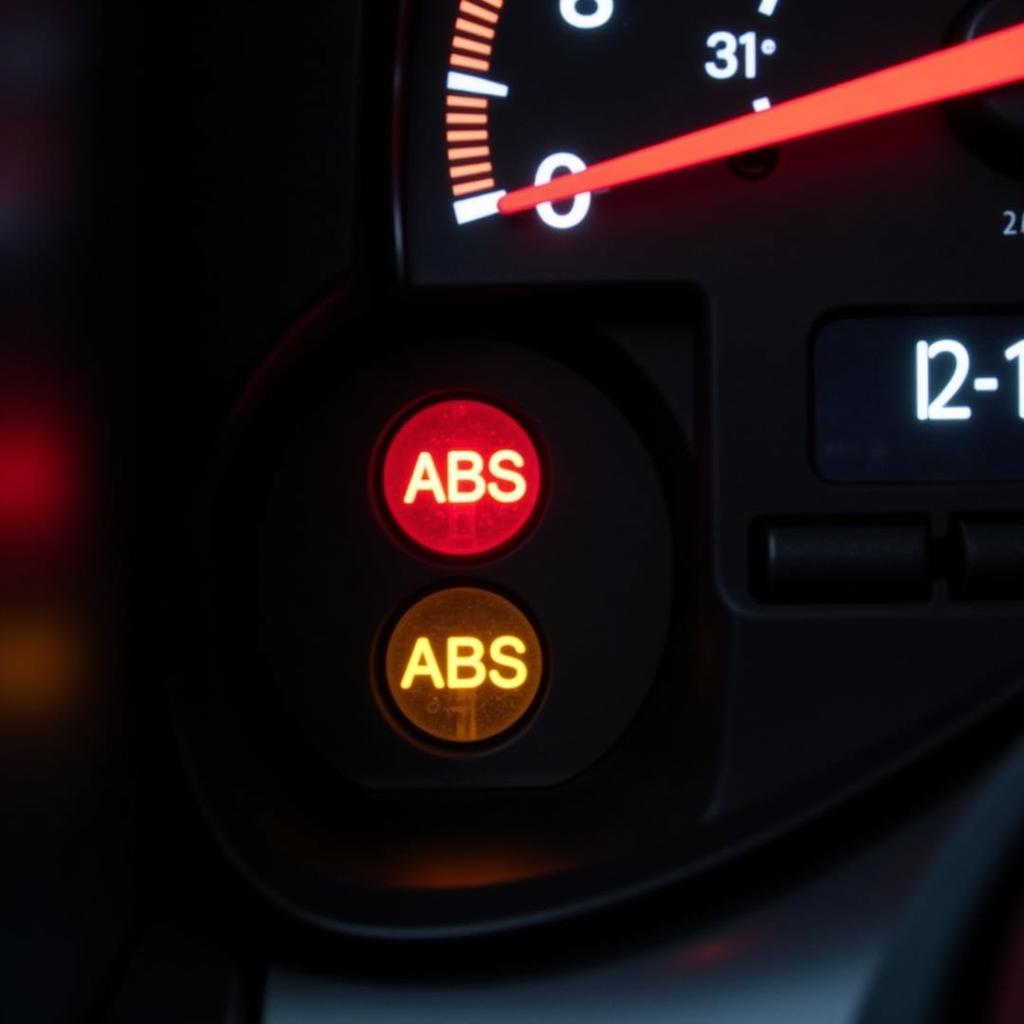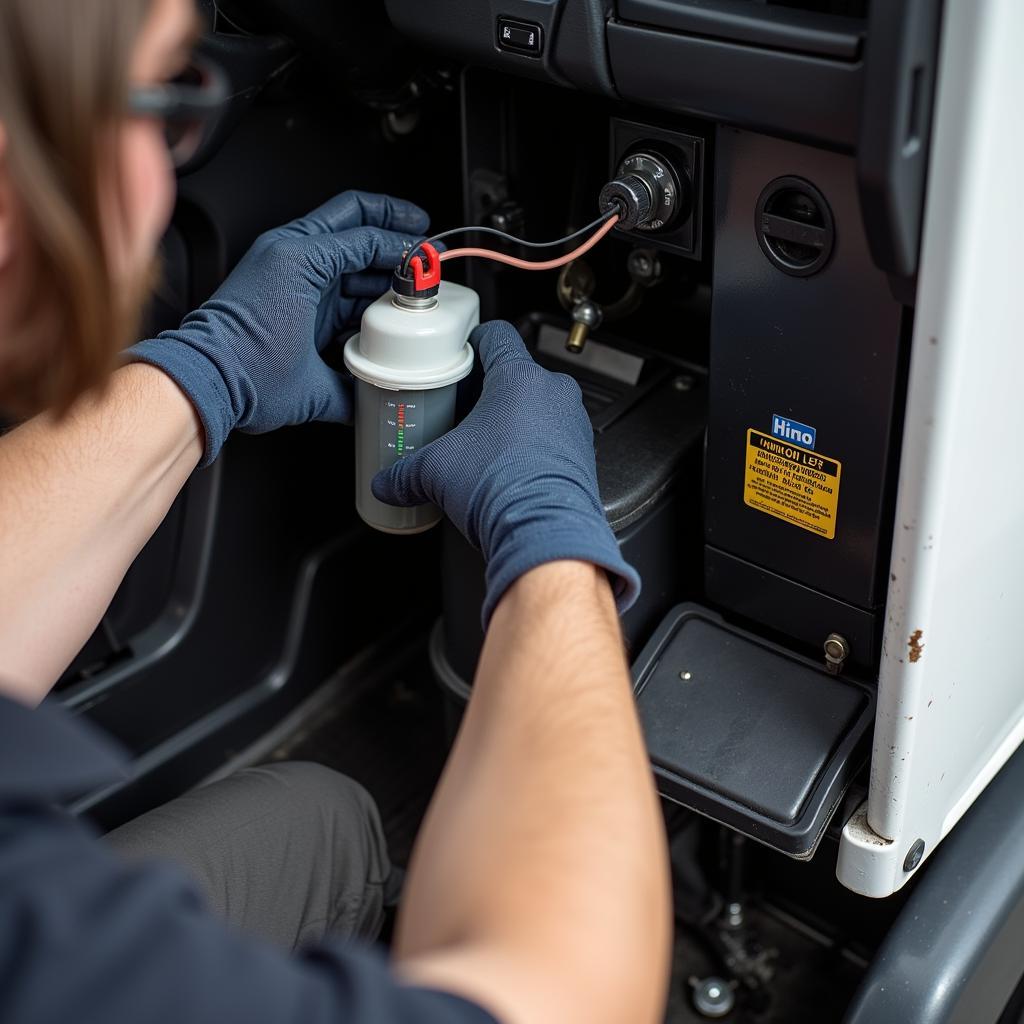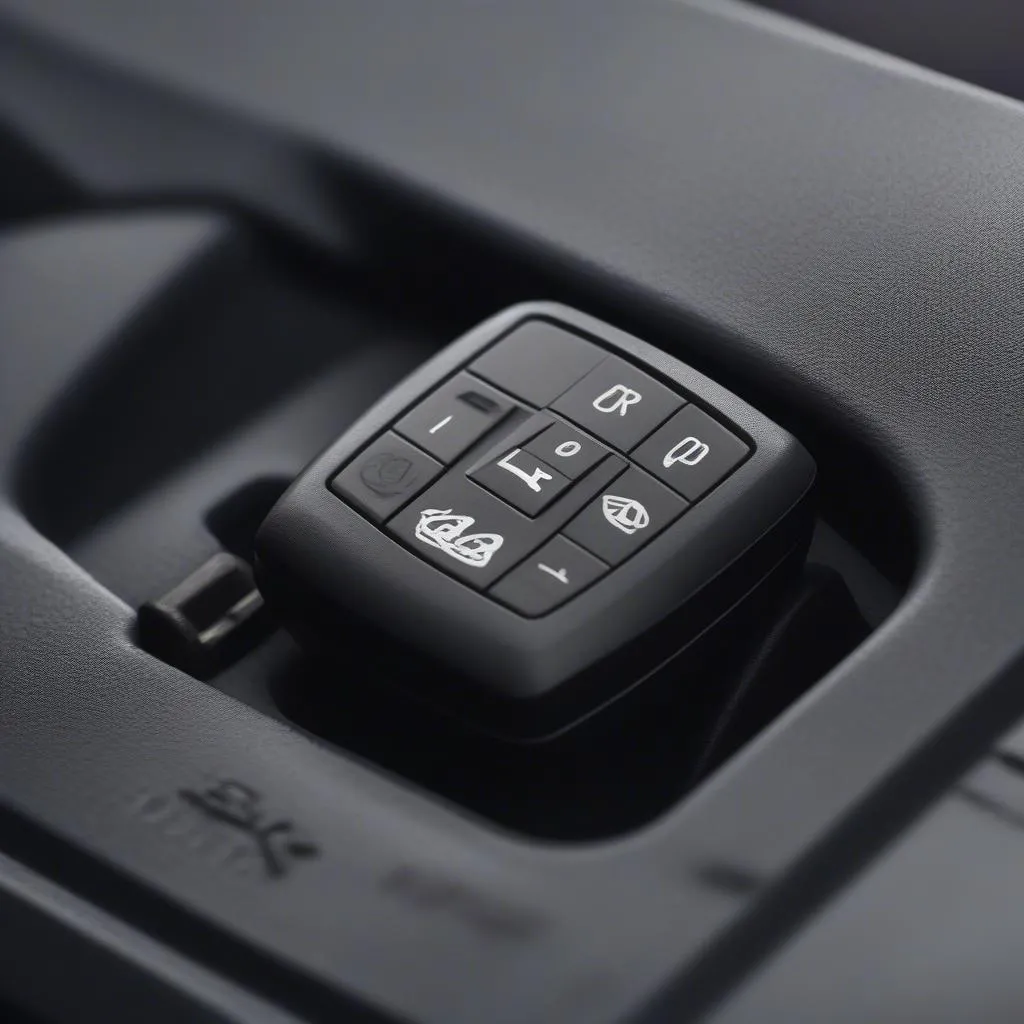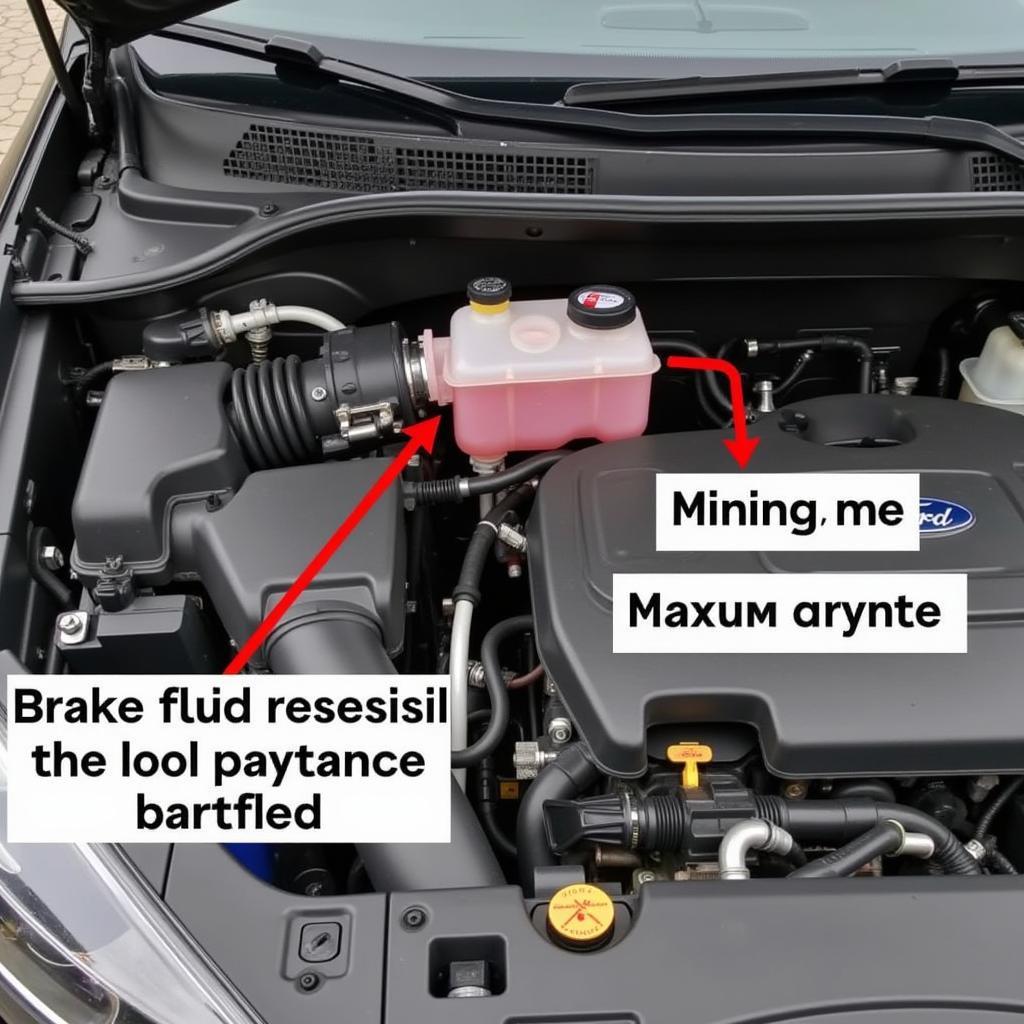A glowing brake warning light on your Hino truck’s dashboard is a call to action, not a suggestion to be ignored. While it might seem like an inconvenience, this warning is crucial for your safety and the longevity of your vehicle. This comprehensive guide dives deep into the common reasons behind a Hino brake warning, how to diagnose the issue, and the essential steps to get you back on the road safely.
Decoding the Hino Brake Warning System
Hino trucks are equipped with a sophisticated brake warning system designed to alert drivers of potential issues. Understanding what each warning signal means is the first step towards addressing the problem.
Here’s a breakdown of the common brake warning lights you might encounter in your Hino truck:
- Red Brake Warning Light: This light signals a serious issue with your braking system requiring immediate attention. It could indicate low brake fluid, a malfunctioning ABS system, or a critical problem with the braking components. Driving with this light on is highly discouraged and potentially dangerous.
- Yellow ABS Warning Light: This light signifies a problem with the Anti-lock Braking System (ABS). While your regular brakes might still function, the ABS, which prevents wheel locking during hard braking, may not be operational. It’s important to have this checked and repaired by a qualified technician.
- Parking Brake Light: This light typically illuminates when the parking brake is engaged. If it stays on even after releasing the parking brake, it could indicate a faulty switch, worn-out brake shoes, or an issue with the parking brake cable.
 Hino Truck Dashboard with Brake Warning Lights Illuminated
Hino Truck Dashboard with Brake Warning Lights Illuminated
Common Causes of Hino Brake Warnings
Several factors can trigger the brake warning light on your Hino truck. Here are some of the most prevalent culprits:
- Worn Brake Pads and Rotors: Brake pads are designed to wear down over time. When they become too thin, a sensor triggers the warning light. Ignoring this signal can lead to metal-on-metal contact, severely damaging your rotors and compromising braking performance.
- Low Brake Fluid: Brake fluid is the lifeblood of your braking system, transmitting the force from your foot on the brake pedal to the wheels. A leak in the brake lines or a worn-out master cylinder can result in low brake fluid, significantly reducing braking efficiency.
- Faulty Brake Sensors: Brake sensors are responsible for monitoring the thickness of your brake pads and alerting the system when they wear down. Over time, these sensors can become damaged or worn out, leading to false warning signals.
- Air in the Brake Lines: For Hino trucks with air brake systems, air in the lines can cause a soft or spongy brake pedal feel and trigger warning lights. This typically occurs due to leaks in the system or improper bleeding procedures.
- Malfunctioning ABS Module: The ABS module is the brain of your anti-lock braking system. If it malfunctions, it can disrupt the entire system and trigger the ABS warning light.
Troubleshooting Hino Brake Warning Lights
While it’s always recommended to have a qualified technician diagnose and repair brake system issues, here are some initial steps you can take to troubleshoot the problem:
- Check Your Brake Fluid Level: Locate the brake fluid reservoir under the hood and check the fluid level. If it’s below the minimum mark, add the recommended brake fluid type specified in your Hino truck’s owner’s manual.
- Inspect Your Brake Pads: If possible, visually inspect the brake pads through the wheel spokes. Look for excessive wear or if the pad thickness is close to the metal backing plate.
- Listen for Unusual Noises: Pay attention to any grinding, squealing, or scraping sounds coming from your brakes, especially when applying the brakes. These noises often indicate worn brake pads or other issues.
- Check Your Parking Brake: Ensure the parking brake is fully released. If the light remains on, there might be an issue with the parking brake switch or cable.
 Checking the Brake Fluid Level in a Hino Truck
Checking the Brake Fluid Level in a Hino Truck
The Importance of Professional Diagnostics and Repair
While the troubleshooting steps above can help identify some basic issues, it’s crucial to understand that modern braking systems are complex. Attempting DIY repairs on your Hino truck’s braking system without the necessary expertise and equipment can be dangerous and lead to further damage.
Here’s why seeking professional help is crucial:
- Accurate Diagnosis: Qualified technicians utilize advanced diagnostic tools and their extensive knowledge of Hino braking systems to pinpoint the root cause of the issue accurately.
- Proper Repair Procedures: Brake system repairs require specialized tools, procedures, and knowledge of specific torque specifications to ensure proper functionality and safety.
- Genuine Parts and Expertise: Certified Hino service centers use genuine Hino parts, guaranteeing compatibility and optimal performance. Their technicians undergo rigorous training to stay updated on the latest technologies and repair procedures.
hino truck brake warning light on when i apply
Preventing Future Brake Issues in Your Hino Truck
Preventing brake problems is always a better strategy than reacting to them. Here are some proactive maintenance tips to keep your Hino truck’s braking system in optimal condition:
- Regular Brake Inspections: Adhere to the recommended brake inspection intervals outlined in your Hino truck’s owner’s manual. Regular inspections allow technicians to identify and address minor issues before they escalate into major problems.
- Timely Brake Pad Replacement: Don’t wait for your brake pads to wear down completely before replacing them. Replace them preemptively to avoid damaging your rotors and maintain optimal braking performance.
- Brake Fluid Flush: Over time, brake fluid can absorb moisture, reducing its effectiveness. Regularly flushing your brake fluid ensures optimal hydraulic pressure and prevents corrosion within the system.
- Quality Parts and Service: Always opt for genuine Hino parts and seek service from certified Hino technicians. They have the expertise and resources to maintain your truck to the highest standards.
Conclusion
A glowing brake warning light on your Hino truck is a serious signal that should never be ignored. Understanding its implications, identifying potential causes, and taking prompt action can save you from costly repairs, downtime, and potentially dangerous situations. Remember, when it comes to the safety of you and others on the road, investing in professional diagnostics and timely repairs is never a compromise.


